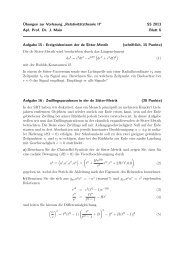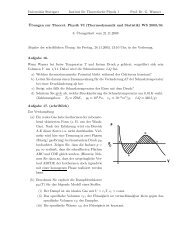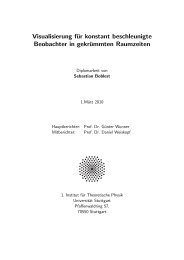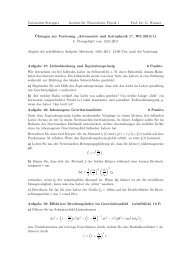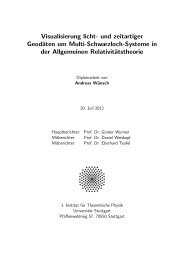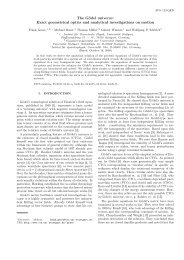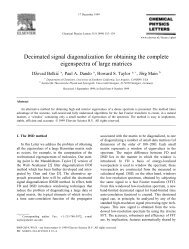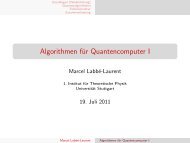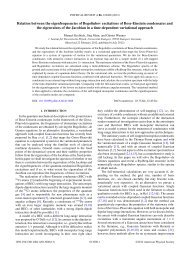2.6M - 1. Institut für Theoretische Physik - Universität Stuttgart
2.6M - 1. Institut für Theoretische Physik - Universität Stuttgart
2.6M - 1. Institut für Theoretische Physik - Universität Stuttgart
Sie wollen auch ein ePaper? Erhöhen Sie die Reichweite Ihrer Titel.
YUMPU macht aus Druck-PDFs automatisch weboptimierte ePaper, die Google liebt.
Summary<br />
The topic of this thesis is ’Diffusion Quantum Monte Carlo simulations for many-electron<br />
atoms in neutron star magnetic fields’.<br />
Introduction: Since the discovery of large magnetic fields (B ≈ 10 5 −10 9 T) in neutron<br />
stars in the late seventies [28] atoms in strong magnetic fields have become a hot topic of<br />
research [28]. Neutron stars are stellar remnants of supernovae explosions. In principle<br />
the quantitative analysis of their electromagnetic spectrum permits the determination of<br />
its parameters, e.g. surface temperature, mass, radius and magnetic field strength. From<br />
these data the internal structure and the physics of the cosmic object can be deduced.<br />
The spectroscopic investigation of these faint objects became only possible by means<br />
of large telescopes of the 10m-class (VLT, Keck) and space-based X-ray observatories<br />
(XMM, Chandra).<br />
Hydrogen and helium in very strong magnetic fields were already examined extensively<br />
in the past [28]. By contrast reliable data for the higher elements are still missing. It is<br />
assumed that the atmosphere of neutron stars consists of atoms and ions created during<br />
the lifetime of the star. In this regard all elements up to a nuclear charge number of<br />
Z = 26 are of interest. The computation of synthetic spectra is done at the University<br />
of Tübingen in the group of K. Werner [34]. This thesis presents for the first time the<br />
possibility of treating medium-Z atoms in selected magnetic fields using the application<br />
of the Diffusion Quantum Monte Carlo method which yields the correct ground state<br />
energy.<br />
In this thesis Schrödinger’s equation is solved for many-electron atoms in very strong<br />
magnetic fields by a simulation method. On the one hand the Variational, and on the<br />
other hand the Diffusion, Quantum Monte Carlo method is used. The general idea of<br />
these two methods is described in chapter 2. The guiding wavefunction which must<br />
be carefully chosen to obtain good results is of crucial importance. Not even an educated<br />
guess leads to the goal. Chapter 3 describes how the guiding wavefunction is<br />
constructed for the unsolved problem of treating atoms up to Z = 26 in strong magnetic<br />
fields. The computing time increases rapidly with the number of electrons. Therefore<br />
the simulation was implemented on a computing cluster. Important information which<br />
has to be considered for parallelism is given in chapter 4. In chapter 5 the results are<br />
compared with other methods by means of tables and diagrams. This chapter considers,<br />
additionally, the error estimate and the computing time. Chapter 6 follows which gives a<br />
summary of this thesis and an outlook. Further thoughts on the solution of the questions<br />
pointed out in the outlook are given. The appendix contains general information about<br />
125




